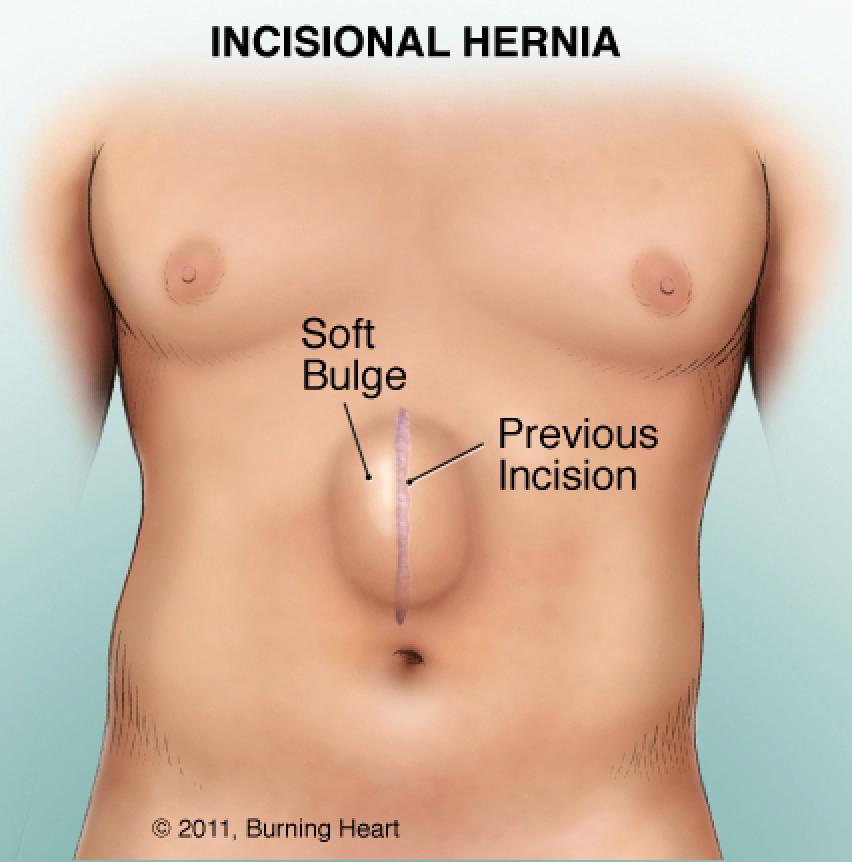
Introduction:
Incisional hernia is defined as an abdominal wall defect at the site of abdominal wall closure and more than 10% of patients, who undergo laparotomy, experience the hernia.It is estimated the number of incisional hernia repair cases would reach 90,000 in USA, 41,000 in Germany3 and 2,150 in Korea per year. Approximately 50% of incisional hernia develop or present within the 2 years following surgery, and 74% occur within 3 years.Ventral hernia is a bulge of tissues through an opening of weakness within abdominal wall muscles without surgery.Although the incisional hernia may stay silent and asymptomatic for years, it may enlarge over time and can give rise to complications including pain, discomfort, bowel obstruction, incarceration, and strangulation. Also it may adversely affect an individual’s quality of life. About 17% will lead to incarceration or strangulation with 0.3% mortality, so early surgical intervention is important once the incisional hernia has been diagnosed.
Repairing incisional hernia requires many problems to be overcome: a multi-layered wall structure of different tissue properties in constant motion has to be sutured, positive abdominal pressure has to be dealt with, and tissues with impaired healing have to be joined.Also we should explain to the patient of the risks of repairing an incisional hernia including seroma formation, wound infection, mesh infection, injury to the intra-abdominal structures, and enterocutaneous fistula which may result in prolonged morbidity and require re-operation, and recurrence.
The goals of incisional hernia repair are the prevention of visceral eventration, incorporation of the abdominal wall in the repair, provision of dynamic muscular support, and restoration of abdominal wall continuity in a tension-free manner.
